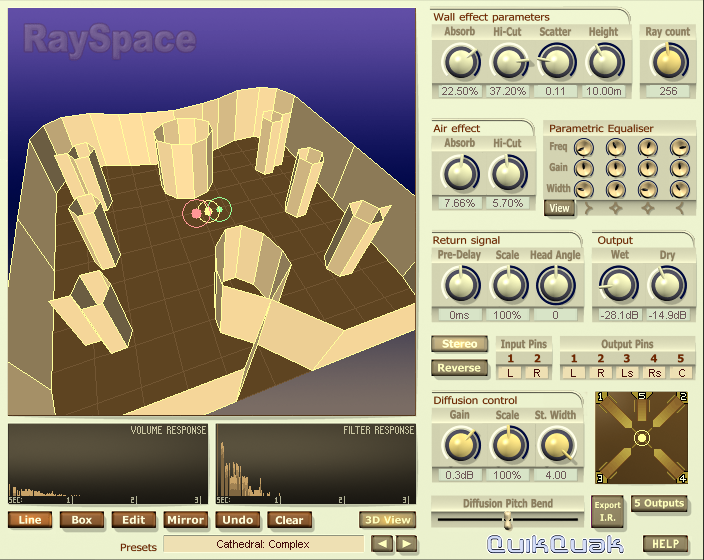RaySpace 2.4 is an updated plug-in for simulating reverb in acoustic chambers. It’s got a fully 3D interface you can rotate around as you make adjustments, and, its creators assure us, it’s not a convolution reverb. Instead, it’s powered by bubbles. Say what?

DBT (Diffuse Bubble Tracing) is a highly efficient algorithm that analyses the entire room in a fraction of a second. It traces ‘bubbles’ of sound bouncing off the walls until they hit the listener. The angle they hit determines the pan and surround position they play from. With hundreds of these sound bubbles the listener is immersed in an incredibly rich environment.
That sounds a bit to me like a combination of physics simulation and basic granular synthesis (at least at the theoretical level). I want to work with the plug-in a little before I make any assumptions about how well it works; stay tuned for a review. Here are the advantages the creators claim this technique has:
- Higher efficiency: “zero latency” (I’m assuming that means once signal enters the plug-in; that’s possible), near-instant updates to settings, CPU-efficient even on longer reverbs (more scalable than convolution and traditional digital reverbs, it sounds)
- Ray scattering for adding “roughness” and “character” via random reflections
- Draw in walls of any angle to create complex, custom rooms
- Stereo spread parameter
The idea sounds fantastic — a ray-tracing algorithm for sound. I’ll be testing to see if it delivers. (Since this is version 2.4, has anyone else tried it?)
Pricing: US$90
Formats: AU
Compatibility: Universal, PowerPC Macs